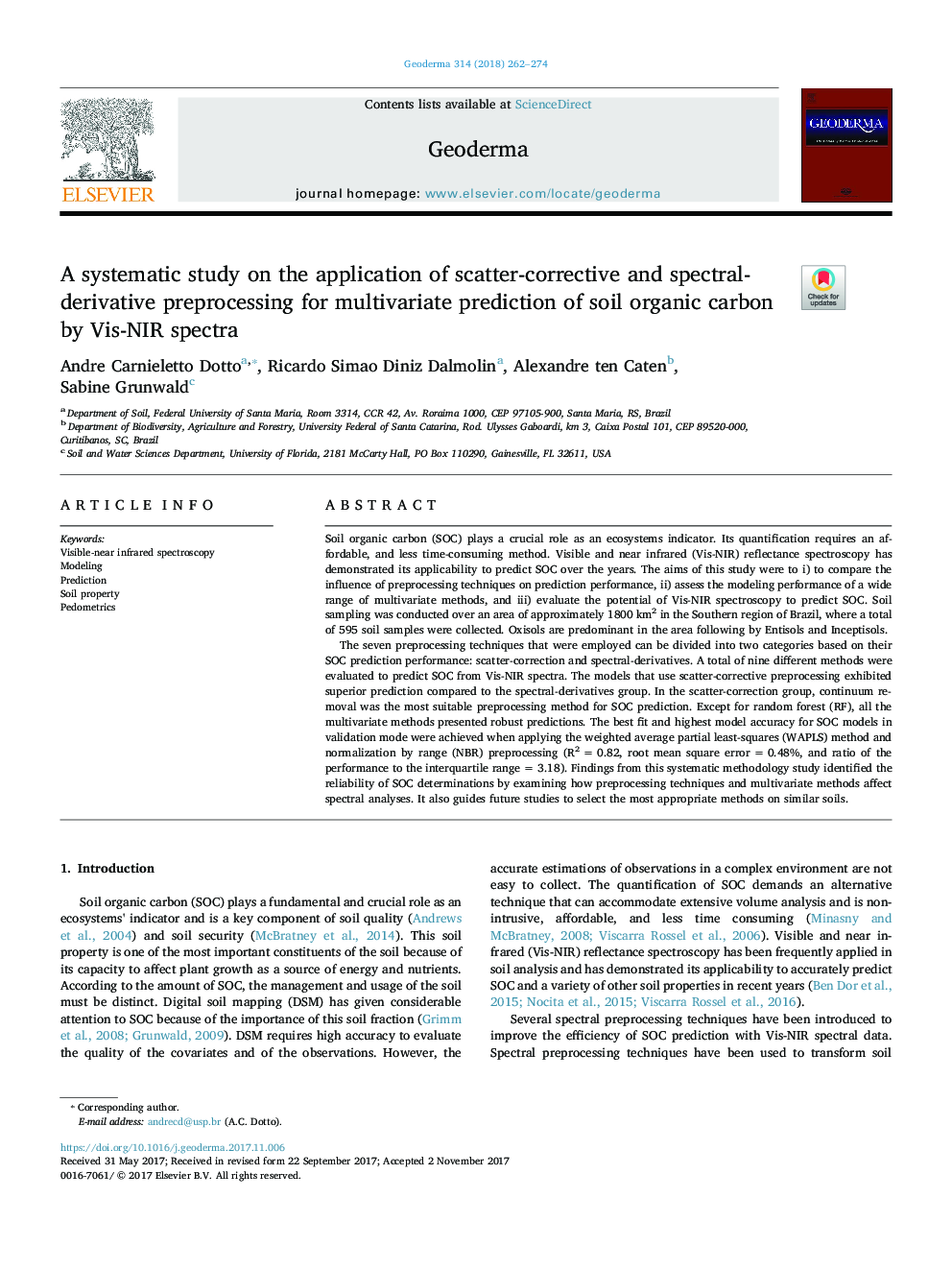| Article ID | Journal | Published Year | Pages | File Type |
|---|---|---|---|---|
| 8894322 | Geoderma | 2018 | 13 Pages |
Abstract
The seven preprocessing techniques that were employed can be divided into two categories based on their SOC prediction performance: scatter-correction and spectral-derivatives. A total of nine different methods were evaluated to predict SOC from Vis-NIR spectra. The models that use scatter-corrective preprocessing exhibited superior prediction compared to the spectral-derivatives group. In the scatter-correction group, continuum removal was the most suitable preprocessing method for SOC prediction. Except for random forest (RF), all the multivariate methods presented robust predictions. The best fit and highest model accuracy for SOC models in validation mode were achieved when applying the weighted average partial least-squares (WAPLS) method and normalization by range (NBR) preprocessing (R2 = 0.82, root mean square error = 0.48%, and ratio of the performance to the interquartile range = 3.18). Findings from this systematic methodology study identified the reliability of SOC determinations by examining how preprocessing techniques and multivariate methods affect spectral analyses. It also guides future studies to select the most appropriate methods on similar soils.
Related Topics
Physical Sciences and Engineering
Earth and Planetary Sciences
Earth-Surface Processes
Authors
Andre Carnieletto Dotto, Ricardo Simao Diniz Dalmolin, Alexandre ten Caten, Sabine Grunwald,
